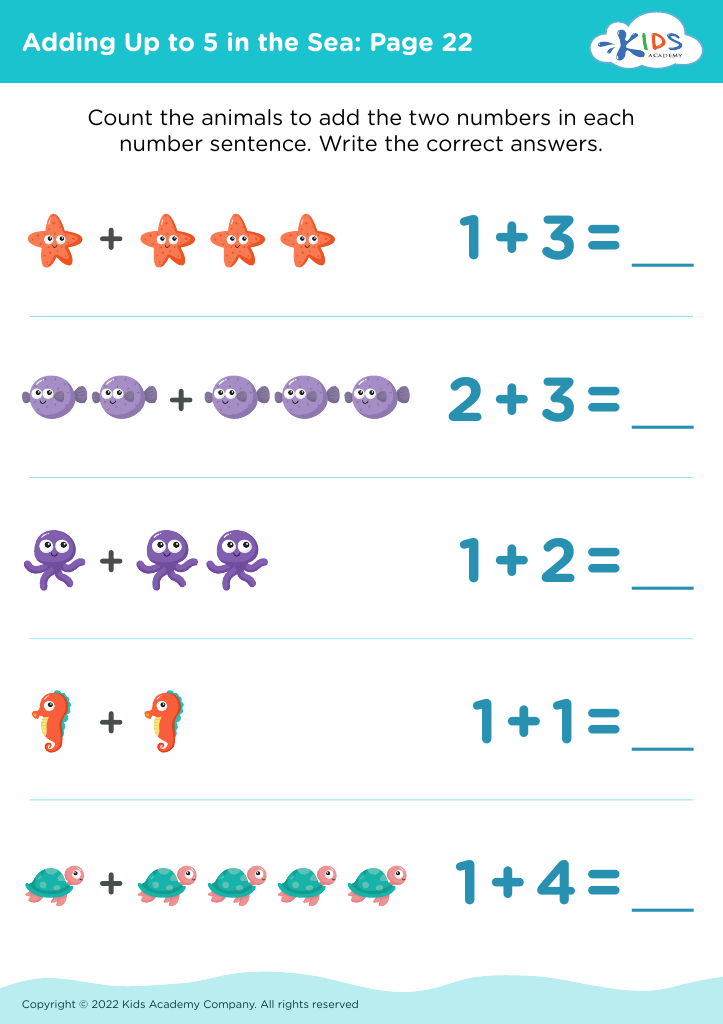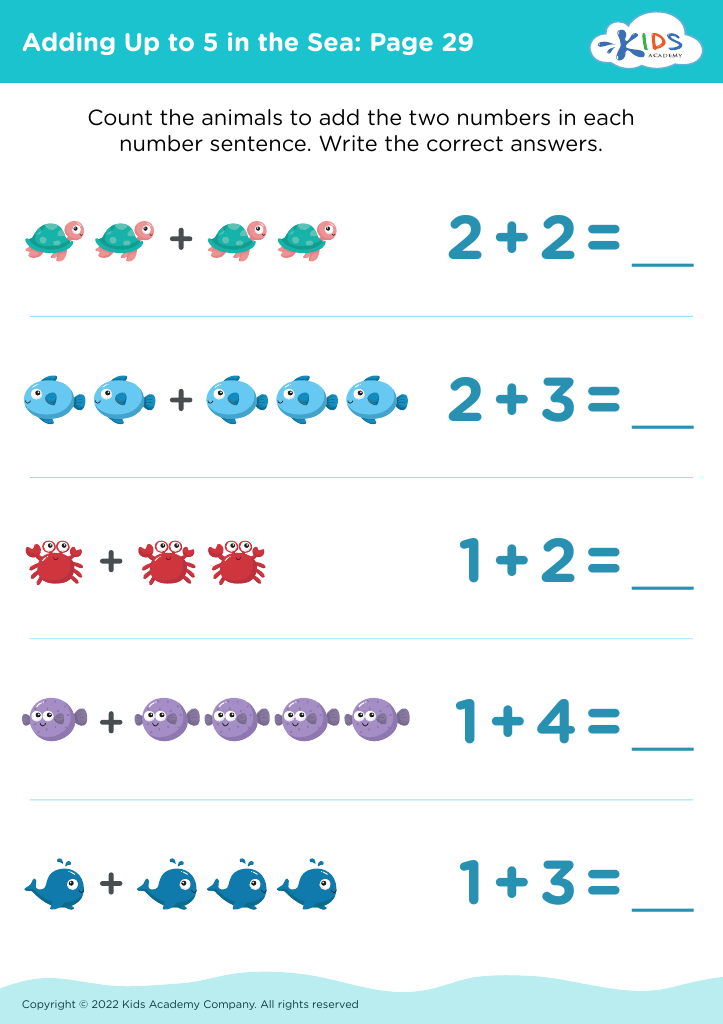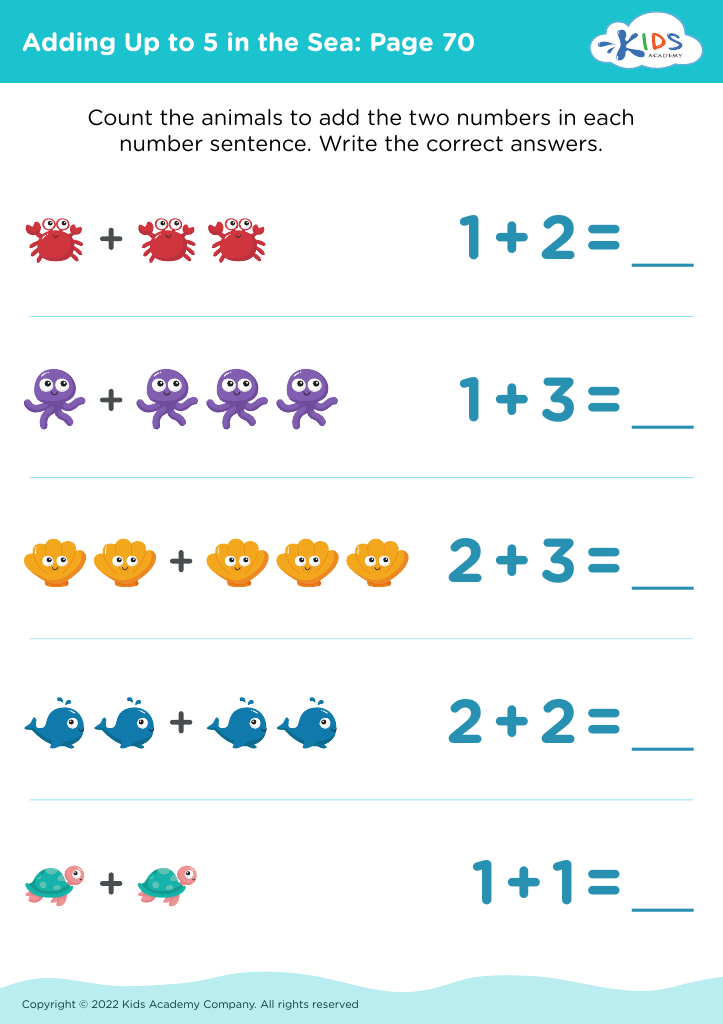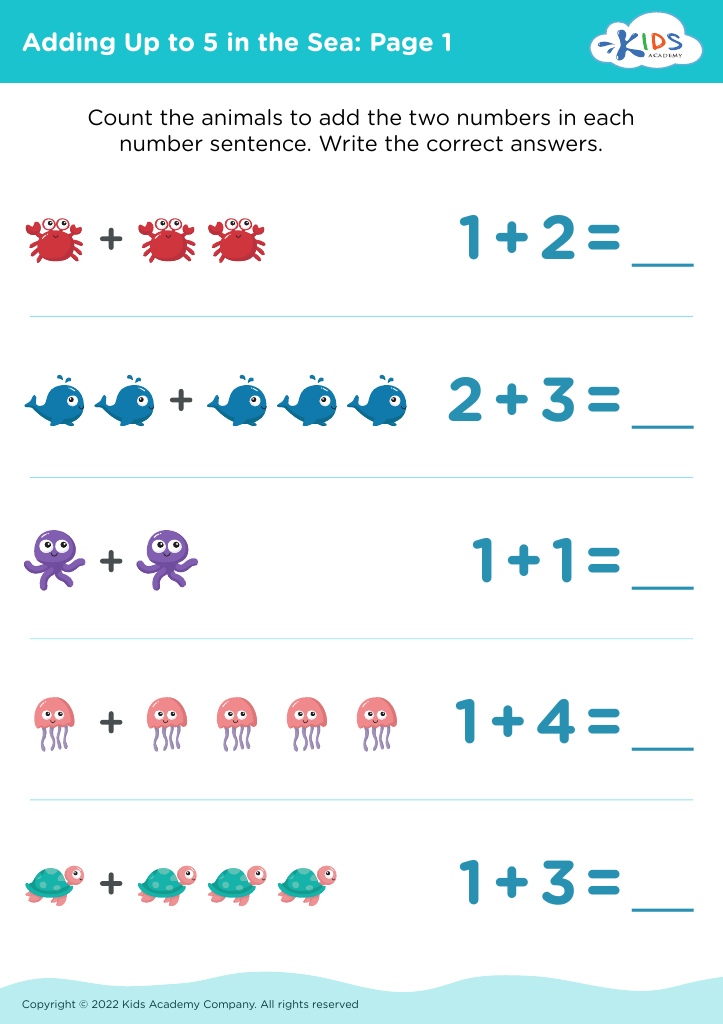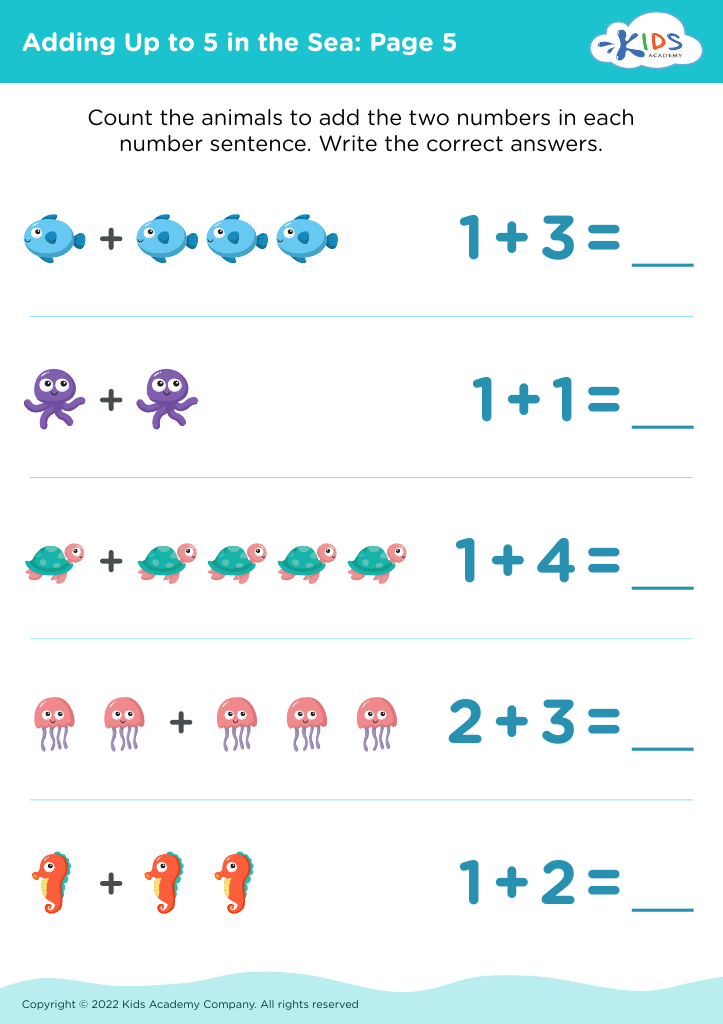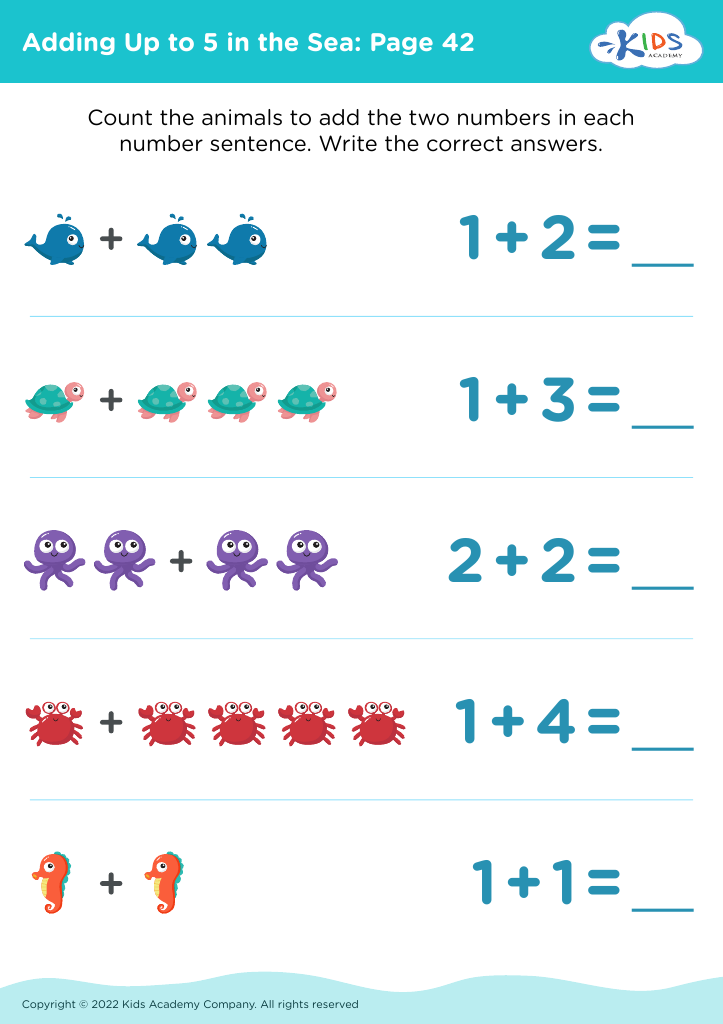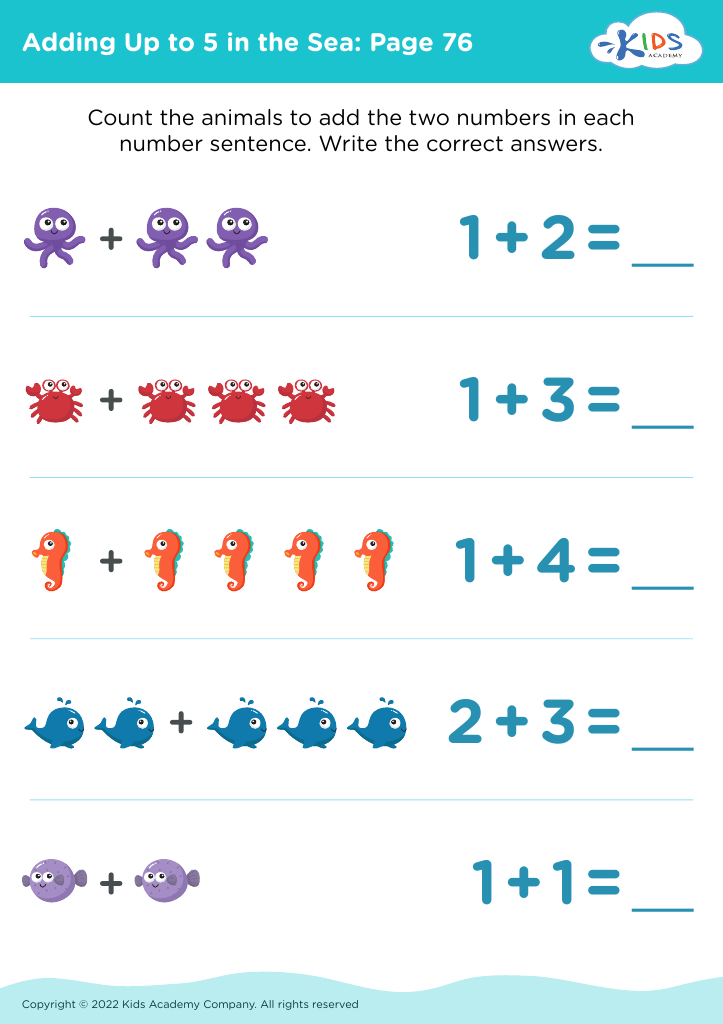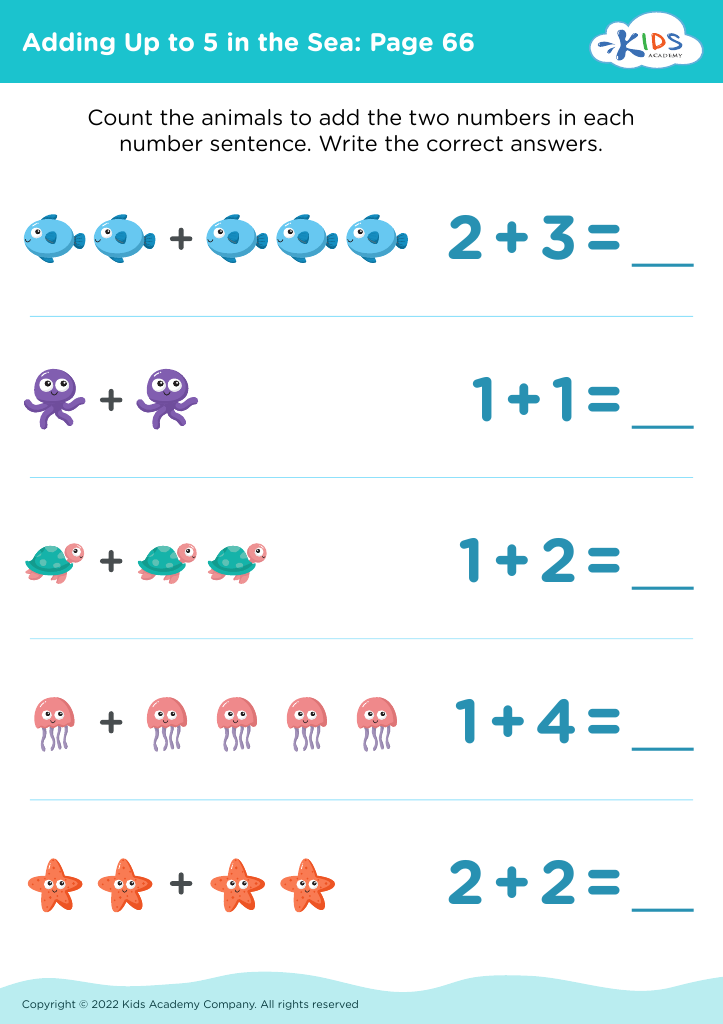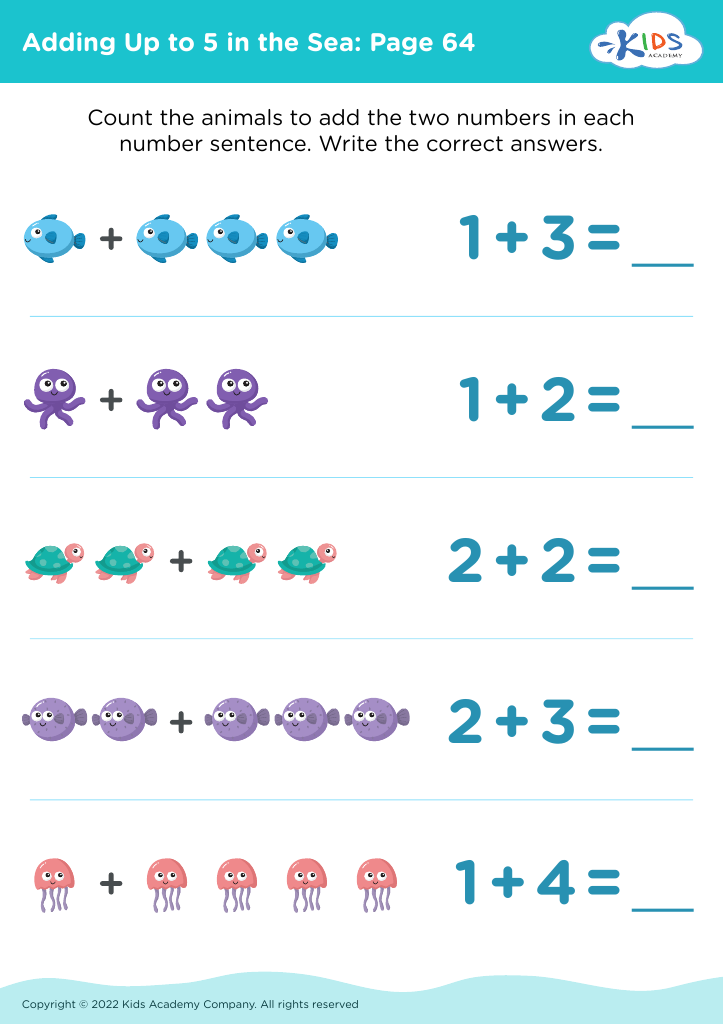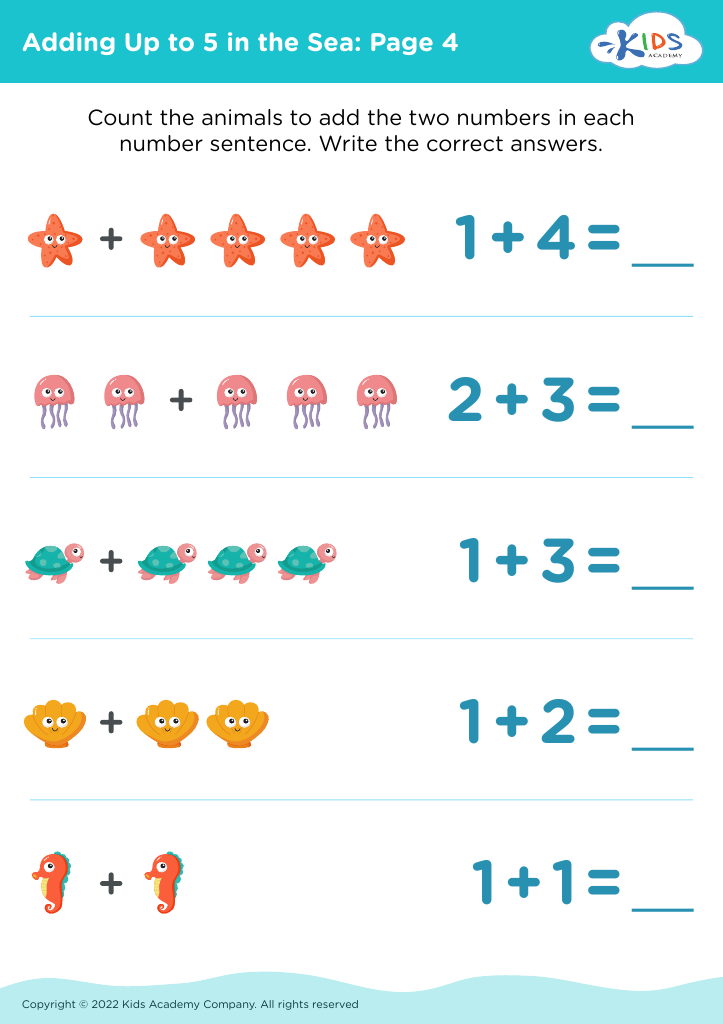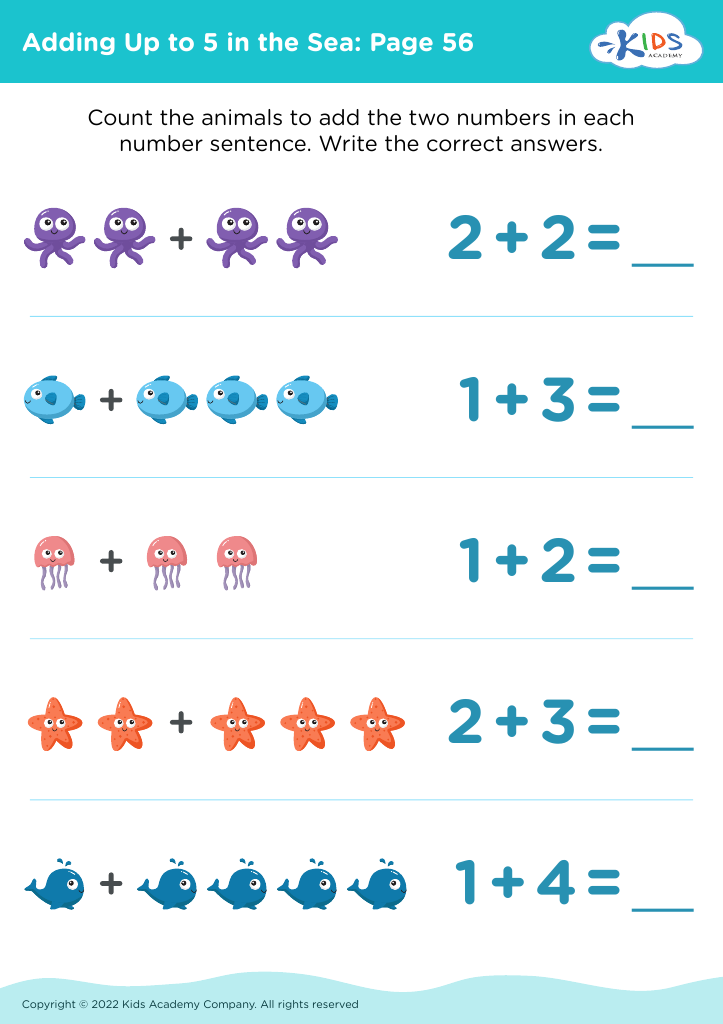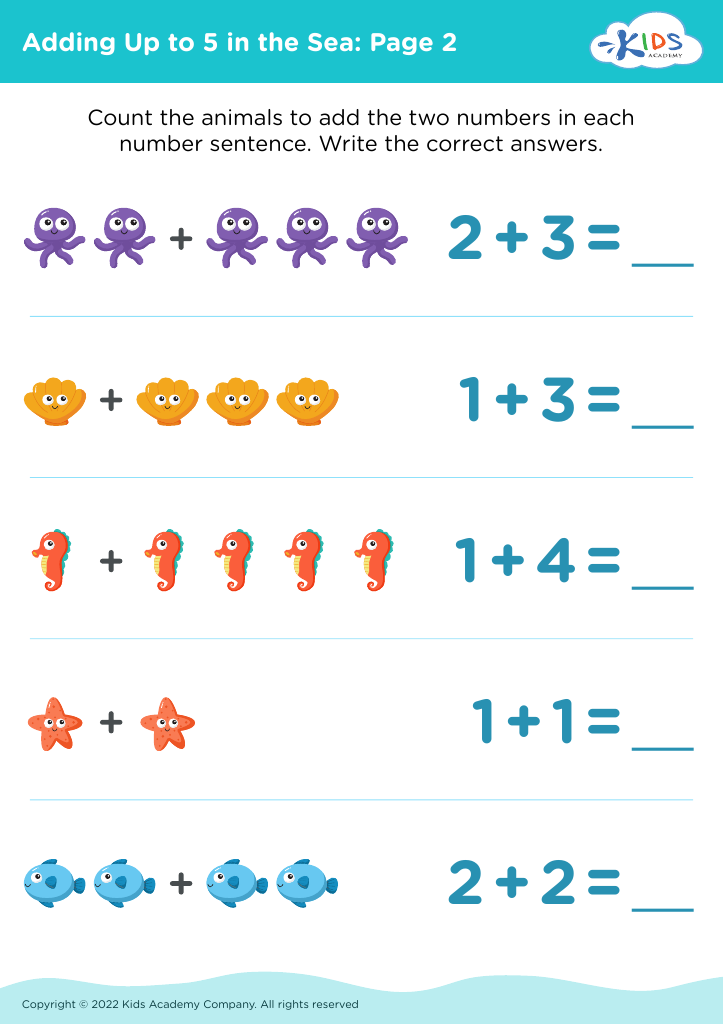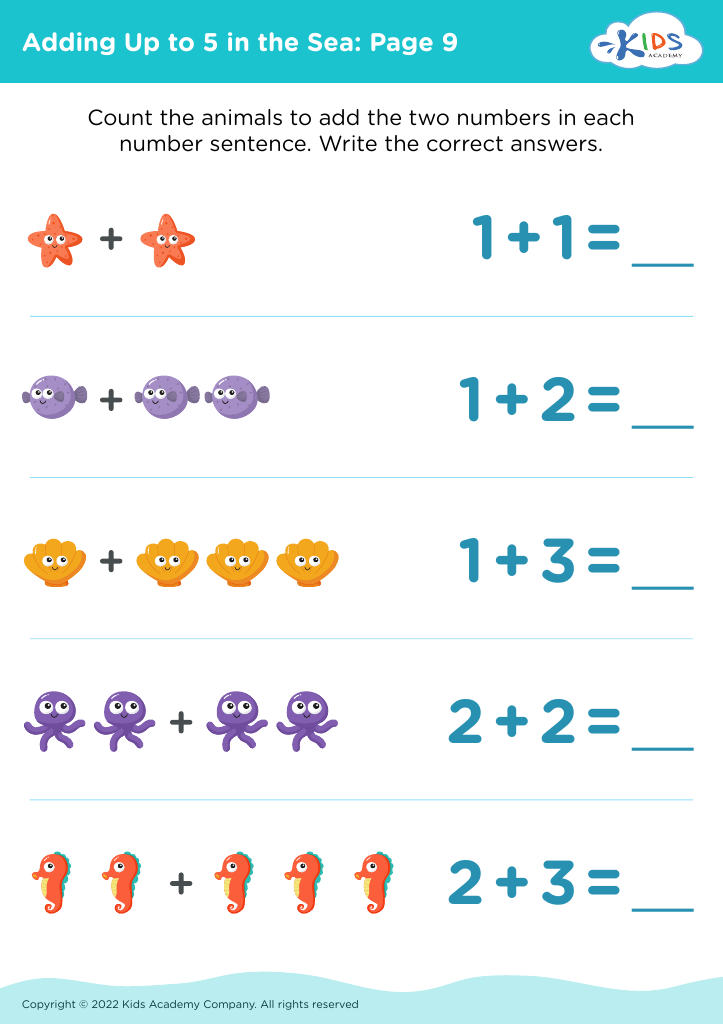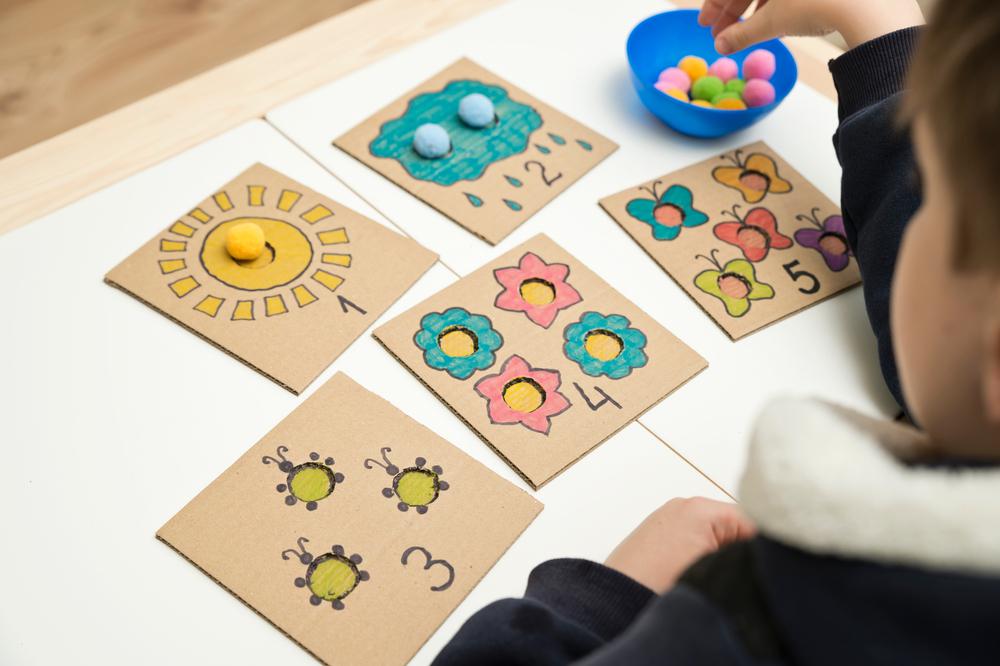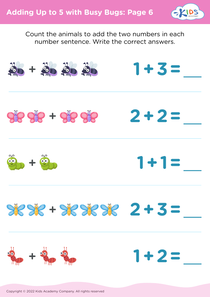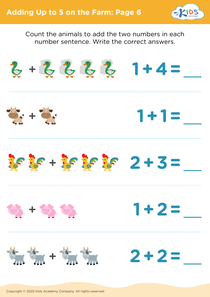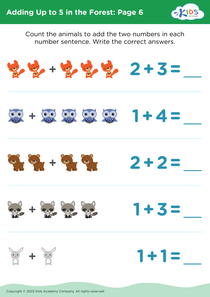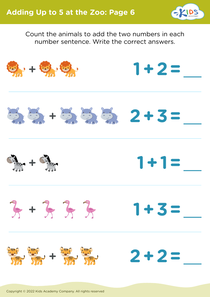Addition skills Adding in the Sea Worksheets for Ages 3-4
15 filtered results
-
From - To
Dive into fun learning with our "Adding in the Sea" worksheets, specially designed for children ages 3-4! These engaging, ocean-themed activities help young learners develop essential addition skills through colorful visuals of sea creatures. Each worksheet features easy-to-follow problems that encourage counting and simple addition practice, making math both enjoyable and interactive. Perfect for preschoolers, these resources promote foundational math abilities, boost confidence, and enhance cognitive development. Ideal for parents and educators alike, our "Adding in the Sea" worksheets provide a creative and stimulating way to introduce early math concepts. Make learning a splash and watch your child's skills flourish!
Parents and teachers should prioritize addition skills, particularly activities centered around themes like "Adding in the Sea" for ages 3-4, for several important reasons. First, early math proficiency lays a strong foundation for future academic success. Engaging with fun, thematic activities helps make abstract concepts more concrete through relatable, engaging contexts. Using a sea theme, for instance, can captivate young learners and spark their curiosity, making addition enjoyable rather than daunting.
Second, these activities develop critical thinking skills as children learn to recognize patterns and relationships among numbers. By using colorful visual aids such as sea creatures or beach toys, children can enhance their understanding of numerosity through hands-on experiences, which is crucial for their developmental stage.
Furthermore, addition skills encourage social interaction and cooperation when children work together on group activities. This not only builds math skills but also fosters communication and teamwork, valuable life skills.
Finally, incorporating themes like the sea allows for creativity and storytelling, integrating multiple domains of learning. In essence, emphasizing "Adding in the Sea" equips young learners with essential math fluency, improves cognitive skills, and creates a love for learning that extends beyond numbers.

